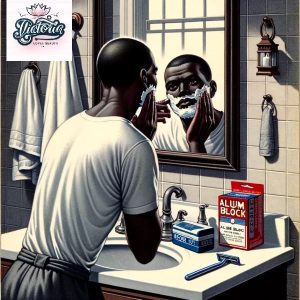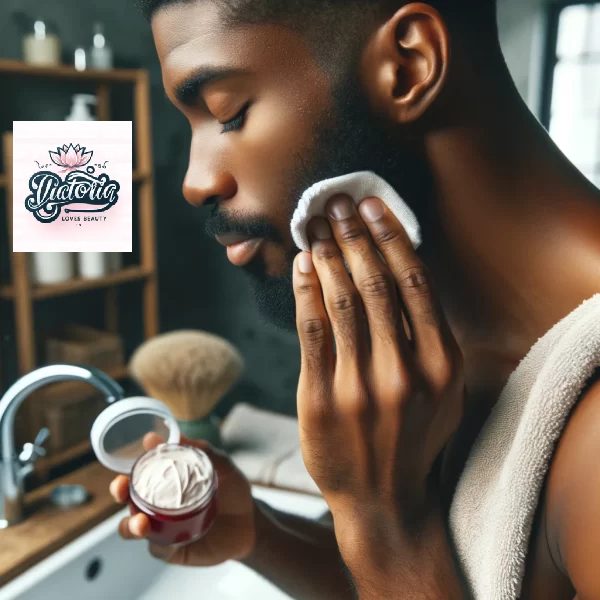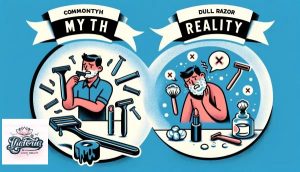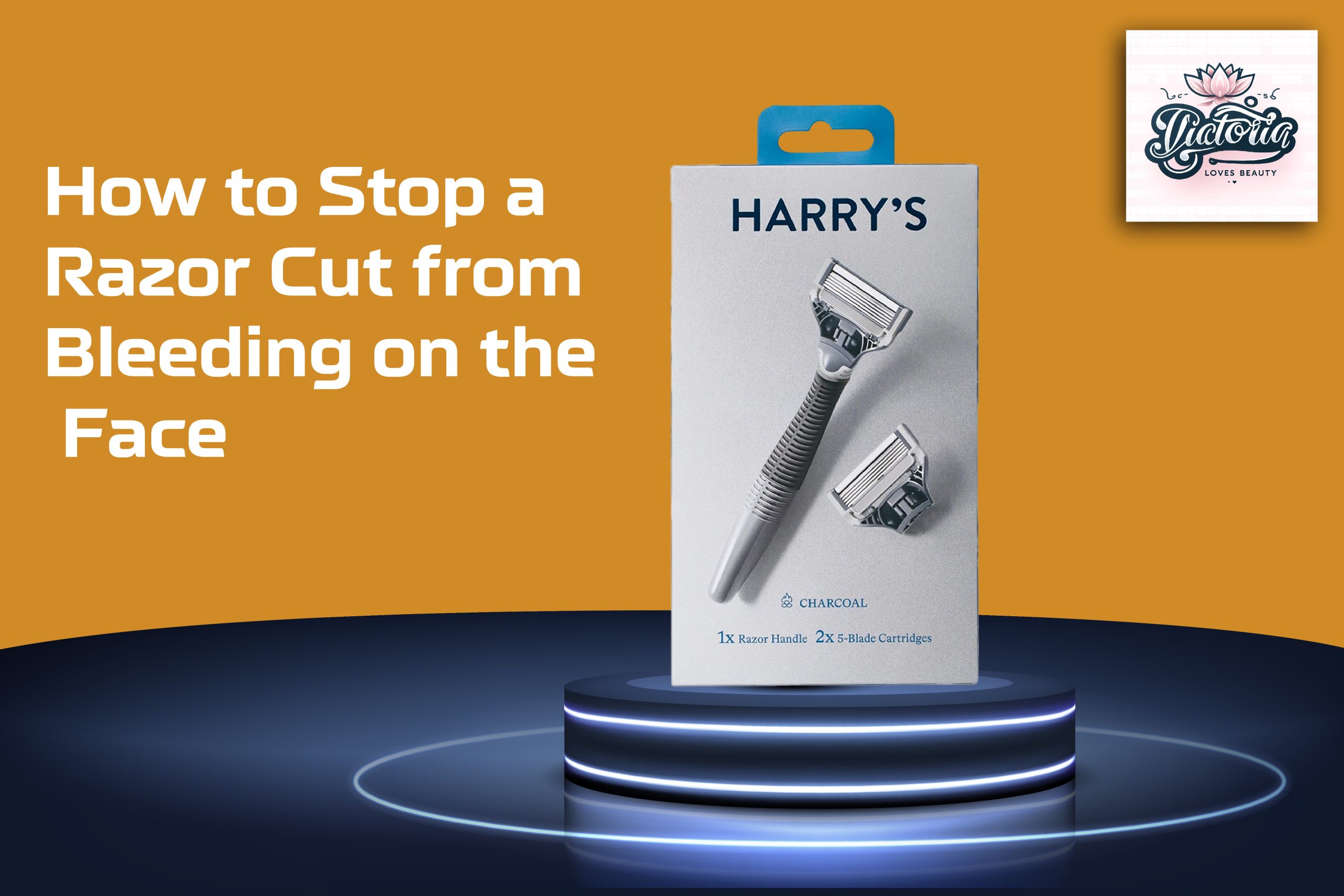Shaving frequently results in the unpleasant surprise of a razor cut, which is challenging to treat when it occurs on the face. Whether you have a little cut or more severe bleeding, our guide offers simple instructions and helpful advice to fix your shaving accident quickly and securely. Come along as we discuss the best ways to reduce a potentially ugly issue into a tolerable hiccup in your hygiene regimen.
Understanding Razor Cuts
It’s essential to learn about the nature of razor cuts, mainly if they occur on the face. These incisions are usually tiny, but because of the peculiar properties of face skin, they can be pretty problematic. Because the face has many blood arteries, minor injuries might cause more severe bleeding. Modern razors tend to create immaculate, accurate cuts, exacerbating this even more. Even though they don’t look as bad, these cuts prevent blood from clotting naturally. Even a tiny cut from shaving can cause substantial bleeding because the smooth edges of a razor cut do not clot as quickly as more jagged wounds do.
Shaving on Different Skin Types
One size does not fit all when it comes to shaving, especially given the variety of skin types. Knowing how each kind of skin responds to shaving may be very helpful in managing and avoiding razor cuts. The following lists typical skin types and how they react to shaving:
- Normal Skin: The least difficult skin type to shave is normal skin. It contains a moderate amount of dampness and isn’t extremely sensitive. It is less common for those with normal skin to get nasty razor wounds or discomfort. Still, keeping up proper shaving habits is crucial to avoiding problems.
- Oily Skin: Excessive sebum production is a hallmark of oily skin. Because the natural oils lubricate, shaving may occasionally be more straightforward as a result of this. The drawback, however, is an increased risk of ingrown hairs and acne, which can make shaving more difficult. To avoid infection, razor cuts on oily skin must be carefully cleansed.
- Dry Skin: Shaving might be difficult if you have dry skin. It is more prone to nicks, razor burns, and irritation. Using a moisturizing shaving lotion and hydrating the skin beforehand might be beneficial. A moisturizing balm after shaving is essential to prevent the skin from becoming even more parched.
- Sensitive Skin: People with delicate skin should exercise further caution. Razor cuts, redness, and irritation are familiar with this kind. Minimize problems using a clean, sharp razor and hypoallergenic shaving creams and aftershaves. Handling sensitive skin gently is necessary, mainly if there has been a cut.
- Combination Skin: This type of skin exhibits both dry and oily patches. The way you shave should change depending on the region. For example, drier portions require more moisture, whereas oilier spots may require less lubrication.
Immediate Response to a Razor Cut
Apply Cold and Pressure: The first thing to do when dealing with a razor cut is to use a clean, moist cloth that is preferably cold to apply firm, moderate pressure. This technique has two benefits: the coolness of the cloth or additional ice helps constrict the blood vessels, and the pressure helps stop the blood flow. Blood artery constriction lessens bleeding by delaying the blood flow to the wounded region. It’s an easy but effective way to start caring for a razor cut.
Apply Astringents: The wound has to be disinfected once the bleeding has been stopped. Here, witch hazel toner is a fantastic choice. Its mild nature, absence of alcohol, and inherent astringent qualities aid in further constriction of blood vessels while also sanitizing the surrounding region. Although aftershaves with alcohol can also act as disinfectants, they may be harsher on the skin and cause irritation and dryness. As such, they ought to be used carefully, particularly on sensitive skin types.
Home Remedies: Common home things might work surprisingly well for people who seek natural or easily accessible alternatives. Compounds included in ground coffee and chilled tea bags encourage vasoconstriction, or the narrowing of blood vessels, which lessens bleeding. It might also be helpful to dab on a little lip balm. The lip balm is a barrier that seals the wound and shields it from outside elements, reducing the risk of infection and more bleeding.

Advanced Methods
Beyond basic first aid, advanced techniques for healing facial razor wounds involve using more specialized equipment and sometimes even non-traditional remedies.
Alum Block or Styptic Pencil: Both styptic and alum blocks are age-old medicines that are still quite successful today. These chemicals, which are derived from potassium alum or aluminum sulfate, function by constricting blood arteries and accelerating the clotting of blood. They form a barrier that expedites the clotting process and serves as a disinfectant when applied to a razor cut. This two-pronged approach reduces the chance of infection while simultaneously halting the bleeding. Additionally, by lessening inflammation and encouraging healing, their astringent qualities might aid in skin soothing.
Unusual Remedies:
- Deodorants with Aluminum Chloride: Using deodorants with aluminum chloride is an intriguing workaround. Like alum and aluminum sulfate, aluminum chloride helps to narrow blood vessels and lessen bleeding. Applying this deodorant to the wound can help halt the bleeding in an emergency.
- Another unusual cure is cayenne pepper, even though it may seem paradoxical. It is thought that cayenne pepper has antimicrobial properties and might speed up blood clotting. Applying a little bit to the wound will hasten the clotting process. It is recommended to use caution, though, as it may burn, particularly on delicate skin or more extensive wounds.
Extra Techniques:
- Vitamin E Capsules: Utilizing the oil from vitamin E capsules is an additional technique. Because of its moisturizing and therapeutic qualities, applying this oil to the wound helps promote recovery. Vitamin E is well known for improving skin healing among its other skin-beneficial properties.
- Pressure spots: Pressing on specific facial spots can also aid in stopping bleeding. Applying pressure at the base of the jaw can help stop bleeding from injuries on the lower face by slowing the blood flow to the affected area.
There are several alternatives available for managing razor cuts with these sophisticated techniques. They provide efficient means to promptly manage bleeding and encourage healing, ranging from standard treatments like alum blocks to more contemporary and unusual techniques. Every technique has advantages and disadvantages, and the option may vary according to the skin type, degree of cut, and resources available.
Post-Cut Care

Taking care of your cut after shaving is crucial, mainly if it’s on your face. The following explains the steps listed:
Restorative Plan:
- The emphasis now turns to tending to and mending the wound when the bleeding has been appropriately stopped.
- Using a scent-free balm is quite helpful at this point. Generally speaking, perfumed balms cause less irritation to delicate skin, especially in recently cut areas. The balm aids in maintaining the area’s moisture content, which is essential for healing. Dry skin can break and take longer to cure.
- It’s critical to keep the balm on the incision untouched. An infection or slowed healing might result from disturbing the region since it could reopen the wound or introduce bacteria.
- Reapplying the balm regularly is advised, especially before bed.
Light Cleaning:
- To stop an infection, the area surrounding the wound must be cleaned. It’s crucial to proceed cautiously to prevent the reopening or worsening of the wound.
- Scrubbing or rubbing too hard should be avoided as this will aggravate the skin even more and perhaps cause scars.
- There are two reasons why using an evening toner with a witch hazel base is advantageous. First, witch hazel is renowned for its calming, mild effects, perfect for sensitive skin. Second, it has an astringent effect that aids in wound closure and lessens the possibility of bacterial infection.
Additional Tips
Shaving Technique and Preventing Razor Cuts
- Shave with Hair Growth: Shaving in the direction of hair growth causes less irritation and minimizes nicks and cuts. Shaving against the grain can lead to more injuries.
- Use Sharp, Clean Blades: Sharp blades provide a smoother shave and reduce the need for excessive force, decreasing the chance of cuts. Dull blades can snag on hair, increasing the risk of injury.
- When to Seek Help: If a cut bleeds excessively or doesn’t stop within 5-10 minutes, consult a healthcare professional. This is crucial for individuals on blood-thinning medications like NSAIDs.
- Prepare Your Skin: Hydrating your skin with warm water before shaving softens the hair and opens pores for a smoother shave.
- Regular Razor Maintenance: Replace blades or cartridges regularly to ensure they are sharp and effective. Dull blades not only increase the risk of cuts but also cause irritation and infections.
- Mindful Shaving: Take your time and shave carefully to avoid slips and mistakes that can lead to cuts. Rushing increases the risk of injury. Follow these tips for a safer, smoother shave and to keep your skin healthy and cut-free.
Myths and Misconceptions
There are a lot of myths and misconceptions around shaving and treating razor wounds. By taking care of these, we can ensure appropriate maintenance and prevention. Here are some popular misconceptions busted:
Myth: Rubbing Alcohol is the Best Way to Treat a Razor Cut
-
- Reality: While rubbing alcohol can disinfect, it can also be overly drying and irritating, especially on facial skin. Gentler antiseptics like witch hazel or diluted hydrogen peroxide are often better options.

Myth: The Sharper the Razor, the More Likely You Are to Cut Yourself
-
- Reality: Contrarily, a dull razor is more likely to cause cuts. A sharp razor glides smoothly, requiring less pressure and reducing the risk of nicks.
Myth: Applying Pressure for a Few Seconds is Enough to Stop the Bleeding
-
- Reality: Stopping bleeding from a razor cut often requires sustained pressure for a few minutes, depending on the severity of the cut.
Myth: Razor Cuts Heal Better Without Any Topical Application
-
- Reality: While some minor cuts may heal well without intervention, applying an appropriate antiseptic and a healing balm or moisturizer can aid faster and safer healing.
Myth: Razor Cuts Don’t Need Bandages
-
- Reality: Depending on the location and size of the cut, a small bandage can protect the area from infection and help clotting.
Final Thoughts
- Prevention First: Prioritize proper shaving techniques and tools to minimize razor cuts.
- Understand Your Skin: Know your skin type and adapt your shaving method accordingly for a safer shave.
- First Aid Knowledge: Learn how to promptly treat cuts with pressure, astringents, or home remedies to control bleeding.
- Regular Practice: Improve your shaving skills and safety through consistent practice and learning.
- Stay Informed: Keep up with skincare and shaving trends for better techniques and products.
- Aftercare Is Key: Treat your skin post-shave to promote healing and prevent future cuts.
- Embrace Learning: View each shaving experience as an opportunity to refine your routine and technique.

Beauty enthusiast, mom on-the-go, and coffee addict (not necessarily in that order!). When she’s not chasing after her adorable toddler, Victoria is busy researching the latest beauty trends, testing out products, and sharing her discoveries with the world. Join her on this journey of self-care, empowerment, and finding your own unique spark of beauty!
